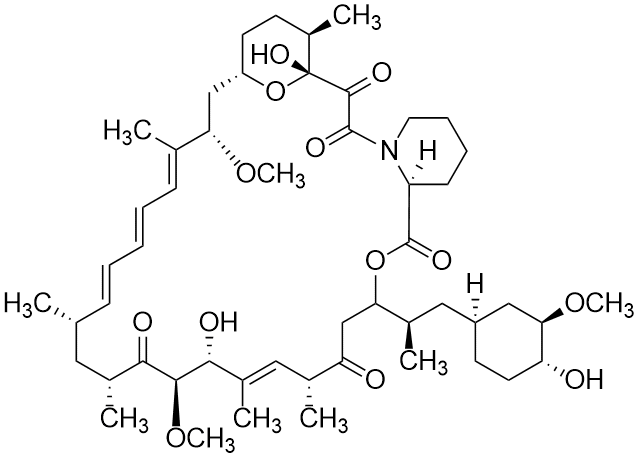Rapamycin from Streptomyces hygroscopicus is widely utilized in research focused on:
- Immunosuppression: Commonly used in organ transplantation, it helps prevent rejection by suppressing the immune response, allowing for better graft survival.
- Cancer Treatment: Its ability to inhibit cell growth makes it valuable in oncology, particularly for certain types of tumors, providing a targeted approach to cancer therapy.
- Cardiovascular Health: Research indicates that it may help in treating conditions like atherosclerosis by inhibiting vascular smooth muscle cell proliferation.
- Anti-Aging Research: Studies suggest it may extend lifespan in various organisms, making it a focus in gerontology for potential applications in age-related diseases.
- Drug Development: Used as a model compound in pharmaceutical research, it aids in the development of new drugs that target similar pathways, enhancing therapeutic options.
General Information
Properties
Safety and Regulations
Applications
Rapamycin from Streptomyces hygroscopicus is widely utilized in research focused on:
- Immunosuppression: Commonly used in organ transplantation, it helps prevent rejection by suppressing the immune response, allowing for better graft survival.
- Cancer Treatment: Its ability to inhibit cell growth makes it valuable in oncology, particularly for certain types of tumors, providing a targeted approach to cancer therapy.
- Cardiovascular Health: Research indicates that it may help in treating conditions like atherosclerosis by inhibiting vascular smooth muscle cell proliferation.
- Anti-Aging Research: Studies suggest it may extend lifespan in various organisms, making it a focus in gerontology for potential applications in age-related diseases.
- Drug Development: Used as a model compound in pharmaceutical research, it aids in the development of new drugs that target similar pathways, enhancing therapeutic options.
Documents
Safety Data Sheets (SDS)
The SDS provides comprehensive safety information on handling, storage, and disposal of the product.
Product Specification (PS)
The PS provides a comprehensive breakdown of the product’s properties, including chemical composition, physical state, purity, and storage requirements. It also details acceptable quality ranges and the product's intended applications.
Certificates of Analysis (COA)
Search for Certificates of Analysis (COA) by entering the products Lot Number. Lot and Batch Numbers can be found on a product’s label following the words ‘Lot’ or ‘Batch’.
*Catalog Number
*Lot Number
Certificates Of Origin (COO)
This COO confirms the country where the product was manufactured, and also details the materials and components used in it and whether it is derived from natural, synthetic, or other specific sources. This certificate may be required for customs, trade, and regulatory compliance.
*Catalog Number
*Lot Number
Safety Data Sheets (SDS)
The SDS provides comprehensive safety information on handling, storage, and disposal of the product.
DownloadProduct Specification (PS)
The PS provides a comprehensive breakdown of the product’s properties, including chemical composition, physical state, purity, and storage requirements. It also details acceptable quality ranges and the product's intended applications.
DownloadCertificates of Analysis (COA)
Search for Certificates of Analysis (COA) by entering the products Lot Number. Lot and Batch Numbers can be found on a product’s label following the words ‘Lot’ or ‘Batch’.
*Catalog Number
*Lot Number
Certificates Of Origin (COO)
This COO confirms the country where the product was manufactured, and also details the materials and components used in it and whether it is derived from natural, synthetic, or other specific sources. This certificate may be required for customs, trade, and regulatory compliance.


